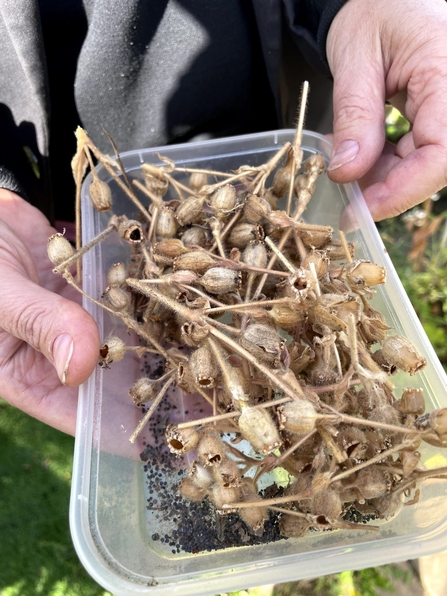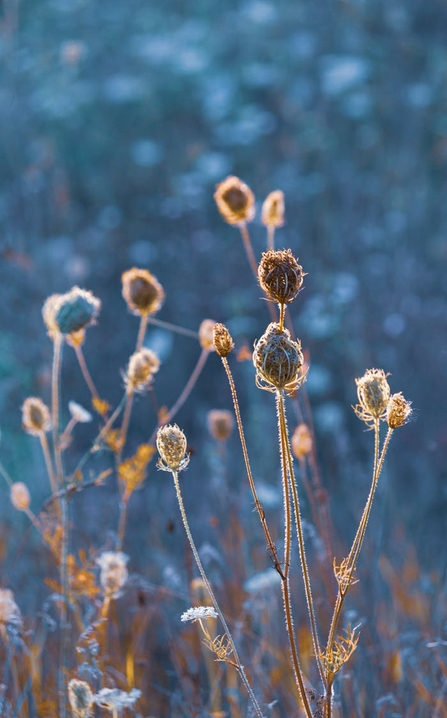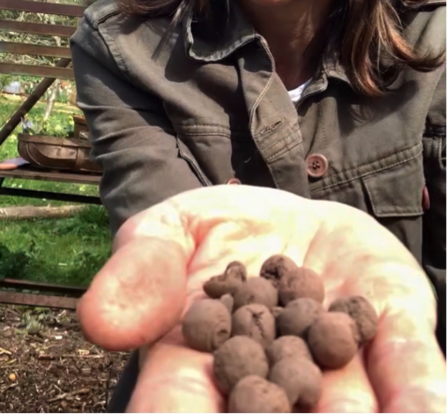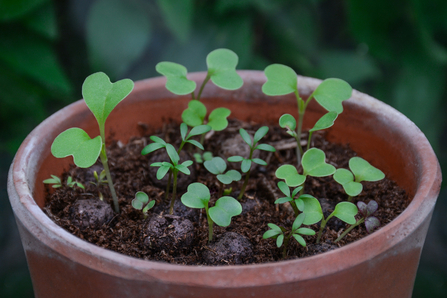In the UK, Autumn typically begins to make its presence felt from the end of August into September. This is when you’ll notice a gradual cooling of temperature, the days becoming shorter, and subtle changes in the environment, such as increased moisture in the air, a crispness and earthy scent. These signs indicate that the season is shifting, even as summer lingers on the calendar. While many of us think to Spring as the season for planting, nature herself does otherwise. British native wildflowers naturally release their seeds in Autumn, following a cycle that has evolved to match our climate over millennia. So, this year why not embrace this natural rhythm, and prepare your garden, balcony and window pots for a wildlife-friendly welcome next spring.
Why Autumn Is the best time to scatter wildflower seeds: Seedball gardener’s secret to success
Photo credit: Seedball

Photo credit; Seedball
Here are five wonderful reasons why you should make scattering wildflower seeds and seed balls in Autumn you’re gardening time of choice!
1. It’s in harmony with nature
In the wild, native wildflowers drop their seeds by Autumn. This natural process ensures that seeds lie dormant over the winter months, ready to burst into life at the perfect time to welcome Spring. By scattering your seeds or seed balls in autumn, you’re mimicking this time-tested cycle, often resulting in higher germination rates. You’re essentially letting nature take the lead, giving your seeds the best possible chance to thrive.
2. Reduced competition for resources
A lesser-known benefit of Autumn planting is reduced competition from weeds. As the cooler temperatures set in, annual weeds begin to die off, and perennial weeds enter a state of dormancy. This means your wildflower seeds will have less competition for vital resources like sunlight, water, and nutrients. With fewer weeds to contend with, your wildflowers can establish themselves more easily and grow more robustly.
3. Optimal weather conditions
Autumn has the perfect weather conditions for seed germination. It’s a season that’s neither too hot nor too cold, with increased rainfall and higher humidity levels. These conditions create an ideal environment for seeds to settle into the soil and begin the process of germination. The cooler temperatures also reduce the stress on young seedlings, giving them a better chance to establish themselves before winter.
4. Stronger root systems
When you sow wildflower seeds in autumn, you give them a head start in developing a strong root system. Throughout the Winter, their roots will continue to grow, even if the plants above ground appear dormant. By the time Summer arrives, your wildflowers will have deep, established roots that are better equipped to withstand the hot, dry conditions of the season. This resilience means your garden will be more likely to thrive, even during periods of drought.
5. Cold stratification for better germination
Some wildflower seeds need a period of cold to break dormancy and trigger germination and help crack open the hard outer casing of the seed. This natural process occurs when seeds are exposed to cold, moist conditions over the winter months. By scattering your seeds in Autumn, you ensure they undergo this essential process, leading to a higher success rate when Spring arrives. Seed balls sown between August and October often germinate quicker and tend to flower earlier in the spring, benefitting from the winter ground frost that helps break their dormancy.

Photo credit: Seedball
Additional Benefits of Autumn Sowing
Sowing in Autumn also comes with a few other advantages. A higher percentage of moisture is absorbed by the seeds during the winter, creating the ideal growing conditions for germination. If scattering seed there is a reduced risk of bird taking them, as the availability of other food sources for birds is greater during this time of year.
However, while Autumn sowing has many benefits, it’s important to keep a few considerations in mind. Avoid sowing seeds and seed balls after first frosts (usually in November) unless a mild winter is expected, as an early frost can cause damage to the seeds. Waterlogged or heavy soil during winter can also cause seeds to rot instead of germinating, so if you anticipate such conditions, it might be better to wait until March or April to scatter or start off in pots.

Photo credit: Seedball
How to Get Started
For the best results, scatter fresh wildflower seeds or seed balls onto a prepared seedbed. When sowing seeds collected from this year’s Seedball wildflowers lightly rake the soil to help the seeds settle in, and then simply let nature do the rest. Come Spring, you’ll be rewarded with a firework display of colour and a garden buzzing with life.
Autumn is more than just a beautiful season; it’s the perfect time to begin a thriving wildflower garden. By scattering seeds and seed balls now, you’re not only ensuring a stunning display next year but also supporting local wildlife and promoting biodiversity. So, this Autumn, embrace nature’s rhythm and scatter your seeds alongside Mother Nature.
Happy scattering!

Photo credit: Seedball
Simply scatter your seedballs on top of soil in your chosen spot and let nature take care of the rest. Grow with Seedball and make your greenspace one step wilder!
For every purchase made through this link, 12% will be donated to London Wildlife Trust.

